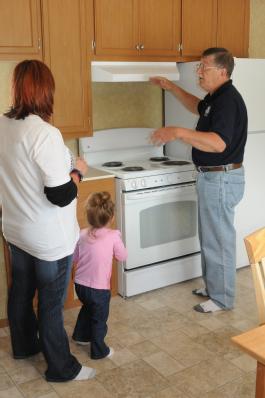One month ago, much of the town of Phil Campbell in Franklin County was destroyed and many residents tragically lost their lives from a series of tornadoes that swept through Alabama, leaving many residents in the community homeless. As each day passes, we continue to admire the strength of these communities as they work together to help their neighbors recover.
Since the tornadoes struck, we’ve been working closely with our federal, state and local partners to meet the needs of disaster survivors. One way FEMA helps survivors after a disaster is by working with our state and local partners to help them find temporary housing for those who have lost their homes, like many in Phil Campbell.
This temporary housing assistance comes in many forms depending on the needs in the community:
- We maintain a list of available properties at the FEMA Housing Portal to help individuals and families, who have been displaced by a disaster, find a place to live.
- Money is available to rent a different place to live or a government-provided temporary housing unit may be available when there are no rental properties.
- In rural areas where no rental properties are available, such as Phil Campbell, we deploy temporary housing units to disaster survivors. These are available to survivors for up to 18 months as they transition to more permanent housing.
Shown below are a few photos that explain some of our Individual Assistance Housing procedures. For more information, see this page on disaster assistance.

Once a unit is installed, state law requires an Alabama Manufactured Home Commission inspector certify it is suitable for living. A final inspection is done by the U.S. Army Corps of Engineers to ensure all health and safety requirements are met.

The first resident of this FEMA temporary housing unit in Phil Campbell signed a lease on May 14. Present are from left; Howard Hutcheson, Franklin County Commissioner; the new tenant and daughter; Johnny Morrow, Alabama Legislator, District 18; FEMA Intergovernmental Affairs Specialist Jim Woodard; and Mayor Jerry Mays.

Interior view of FEMA temporary housing unit. Eligible residents sign agreements for up to 18 months as they find more permanent housing.

Items from a “living kit” before they are unpacked. The kits contain basic items donated from Mr. Coffee, American Red Cross, The Church of Jesus Christ of Latter-day Saints and bedding from the People of Saudi Arabia to help new residents settle in.

As part of orientation for the new tenant of this temporary housing unit, FEMA Individual Assistance Housing Specialist Don Norman points out appliance information.

As part of orientation for the new tenant of this temporary housing unit, FEMA Individual Assistance Housing Specialist Don Norman points out NOAA weather radio information, provided with each unit.

how lucky we are in this country to have those dedicated F.E.M.A professionals who leave their own families to help people devistated by these terrible tornadoes.When the media finds another eye catching news flash,they move on....but the men and women of homeland security stay and help for months....THANK YOU
ReplyDeletewhy is there not more housing coming for the victums it has been 2 weeks since there has been new work orders please explain
ReplyDelete